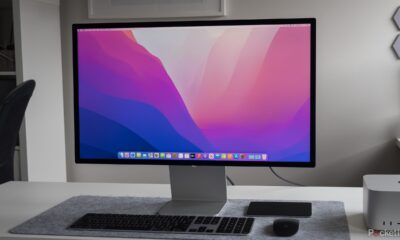Gadgets
Is there any reason to use a screensaver anymore?

Do you remember screen savers? Chances are, you haven’t really used one since the early 2000s. However, if you dig into the settings on your computer, you’ll still find them there.
In recent releases, Apple has included a variety of new screensavers featuring 4K videos of cityscapes and nature. While they are visually stunning, many Mac owners may not even be aware that they exist. On the other hand, Microsoft hasn’t put much effort into creating new screensavers—the ones available in Windows 11 have been around since Windows Vista in 2007. Some classic screensavers like the 3D maze and pipes are no longer present, but others like Bubbles, introduced with Vista, are still available. Additionally, most major Linux distributions also offer a selection of screensavers.
It’s interesting to note that a feature that most people haven’t used regularly in two decades still exists on our computers. After all, our computers no longer have floppy drives or PS/2 ports, so why do screensavers continue to exist? And why were they created in the first place?
Screensavers used to solve a specific problem
As explained by Popular Science staff writer Andrew Paul, screensavers were developed due to the now-obsolete technology of the cathode ray tube (CRT) display. In the 1990s, CRT monitors were much thicker than the LCD displays we use today. The extra space behind the screen was necessary because of the way CRT displays worked—electron “gun” firing particles at a phosphorescent screen to make pixels glow. The issue was that leaving the same image on the screen for too long could result in “burn-in”, where pixels would become “stuck” and permanently damaged.
Similar to how adults would warn kids that making a funny face for too long could make it stick, CRT displays experienced this phenomenon. Burn-in could range from being annoying to rendering the display unusable. While older TVs, also CRTs, rarely faced this issue due to the variety of content displayed, computers were different as the same content often stayed on the screen. This is where screensavers came into play, launching when the computer was idle to prevent burn-in by constantly changing the displayed content.
These days they’re mostly just for fun
Modern computer monitors no longer face the screen burn-in problem for several reasons. LCD displays are not susceptible to permanent burn-in, and the ability to put the display to sleep after a period of inactivity has made screensavers less necessary. However, screensavers remain a feature in operating systems like Windows and macOS because they are enjoyable. Whether it’s nature footage, the green code from The Matrix, or bubbles floating on the screen, screensavers can be a fun addition to your computer.
While most people use screensavers for entertainment, there are also practical uses. For example, setting a clock screensaver allows you to see the time from a distance. Additionally, projects like Folding at Home utilize screensavers to contribute computer resources to scientific research when the device is idle.
Ultimately, screensavers may not serve the same critical function they once did, but they can still be a fun and engaging feature for computer users to enjoy.
Please provide me with another version.
-

 Destination8 months ago
Destination8 months agoSingapore Airlines CEO set to join board of Air India, BA News, BA
-

 Breaking News10 months ago
Breaking News10 months agoCroatia to reintroduce compulsory military draft as regional tensions soar
-

 Gadgets4 months ago
Gadgets4 months agoSupernatural Season 16 Revival News, Cast, Plot and Release Date
-

 Tech News12 months ago
Tech News12 months agoBangladeshi police agents accused of selling citizens’ personal information on Telegram
-

 Productivity11 months ago
Productivity11 months agoHow Your Contact Center Can Become A Customer Engagement Center
-

 Gadgets4 weeks ago
Gadgets4 weeks agoFallout Season 2 Potential Release Date, Cast, Plot and News
-

 Breaking News10 months ago
Breaking News10 months agoBangladesh crisis: Refaat Ahmed sworn in as Bangladesh’s new chief justice
-

 Toys12 months ago
Toys12 months ago15 of the Best Trike & Tricycles Mums Recommend























